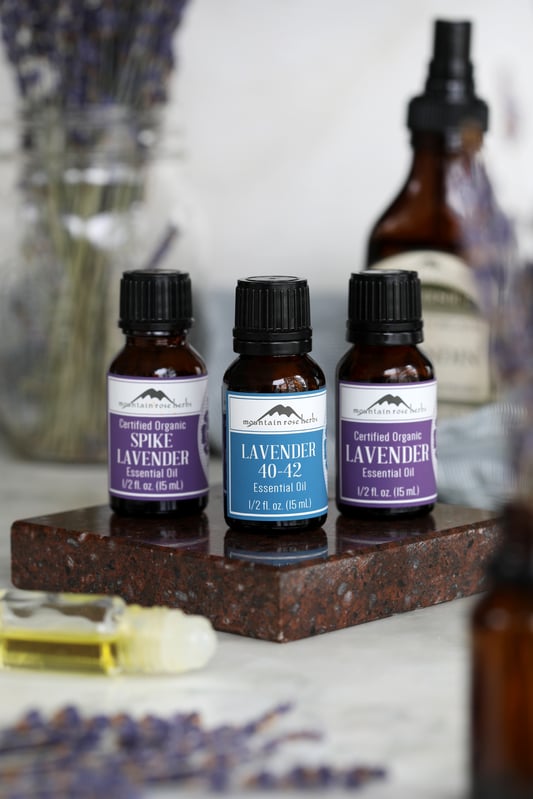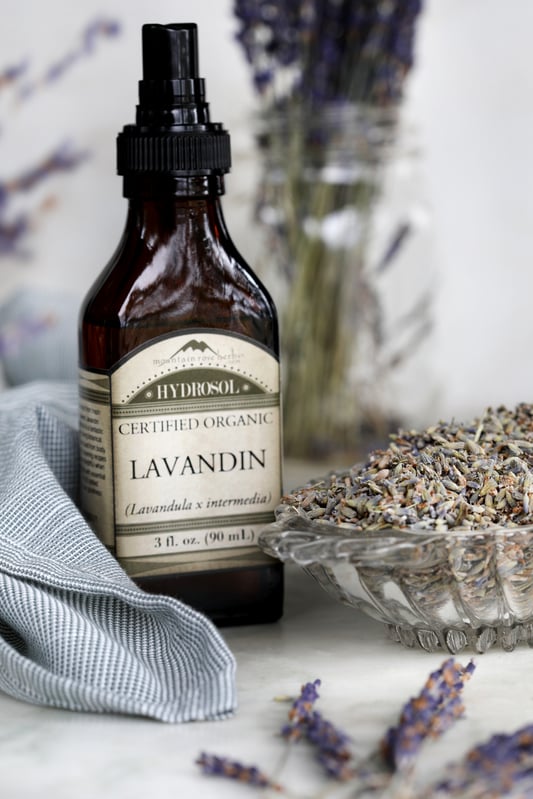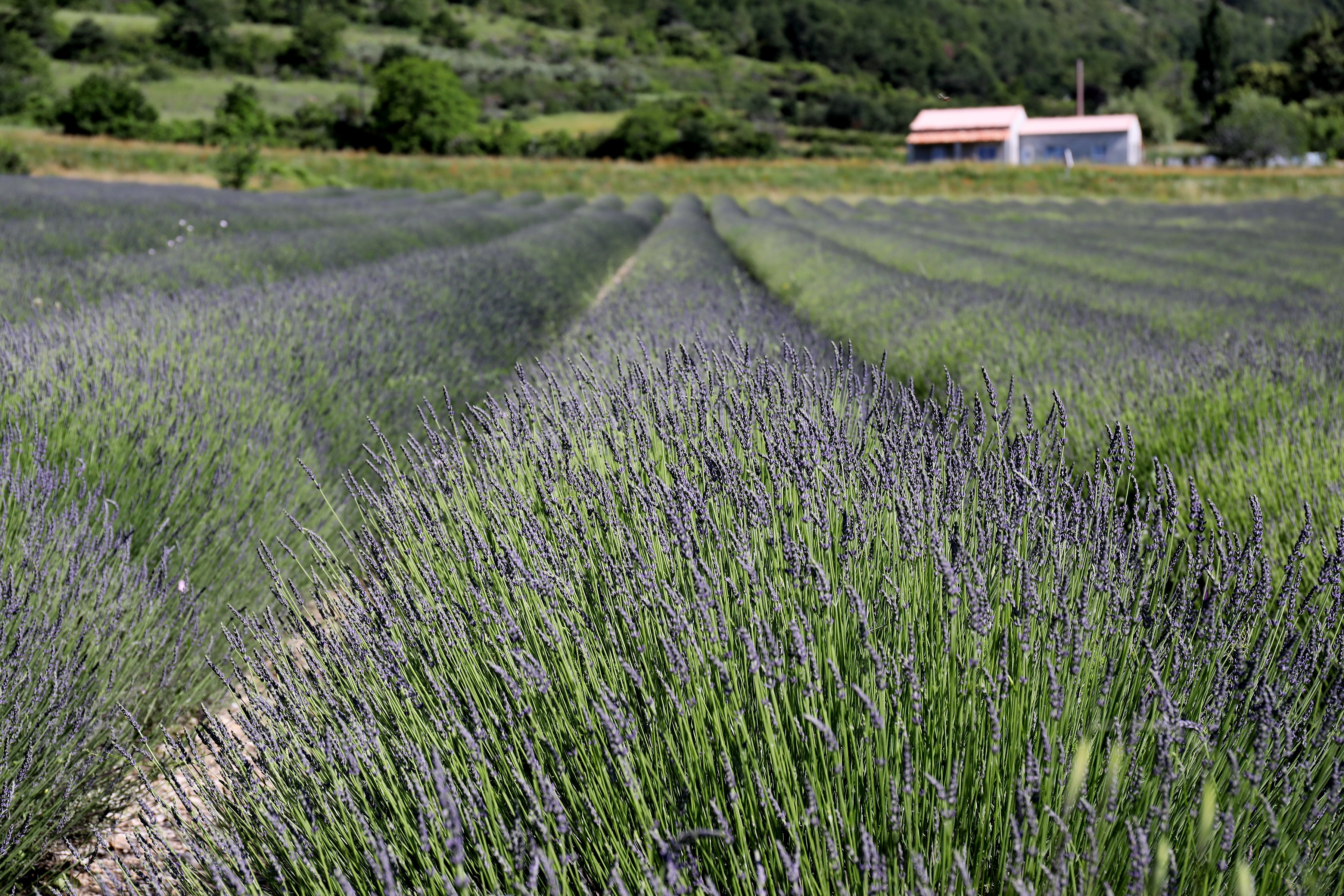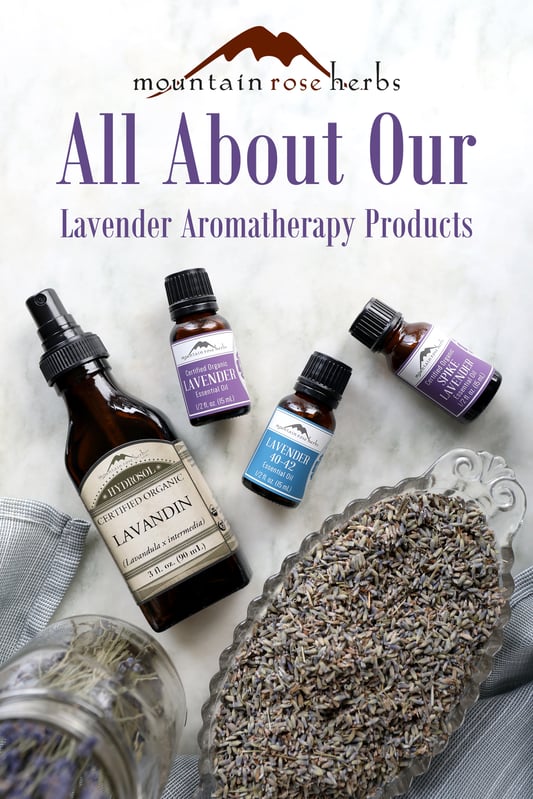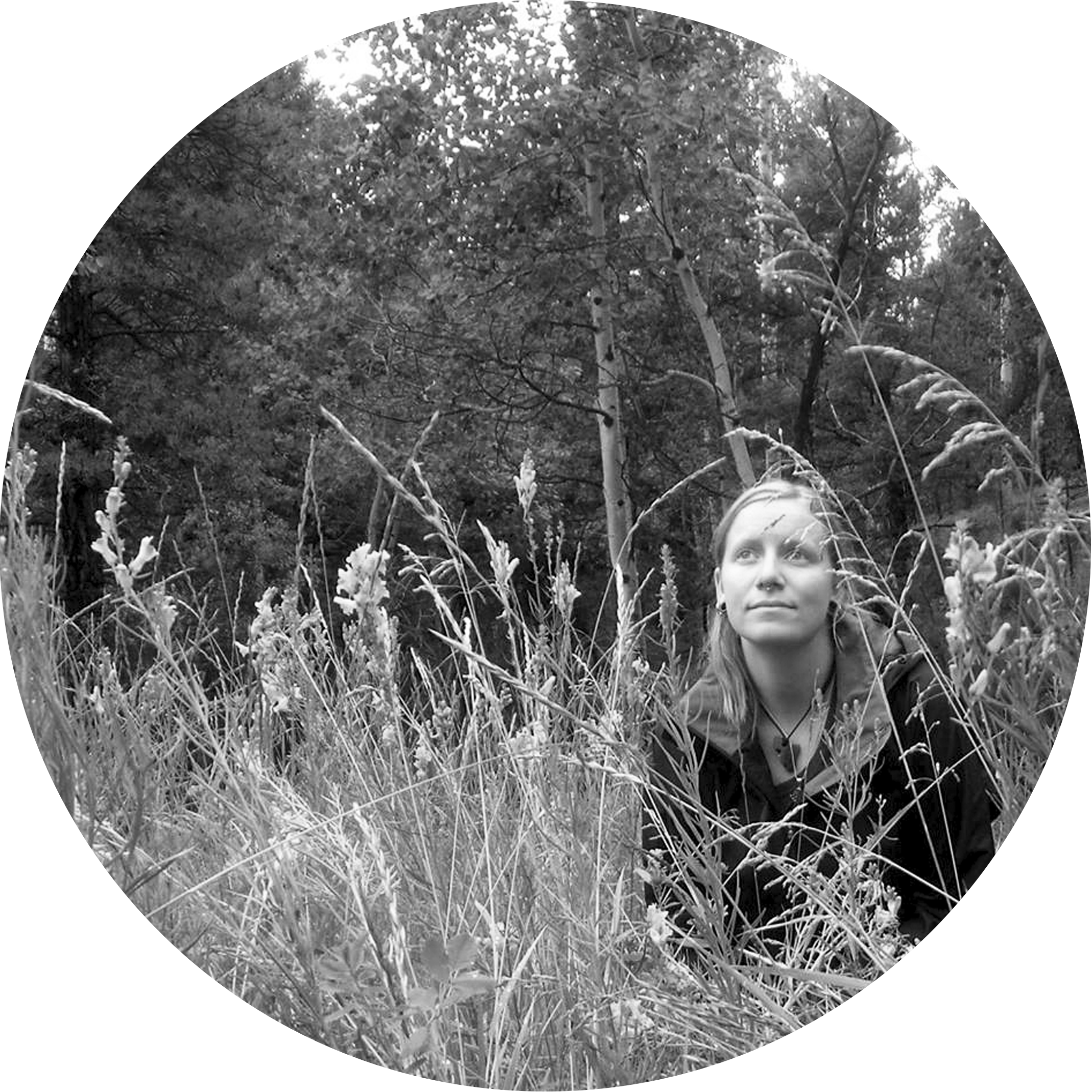Anyone first starting out with essential oils is likely to have encountered lavender early on, either in a beginner’s essential oil kit or as an ingredient in simple fragrance recipes. Its captivating floral scent is easily recognizable and often found in blends designed to calm your mental state, cleanse your house or clothing, or support and refresh skin. However, as you continue with your aromatherapy adventures, you might find yourself asking questions like "what is lavender 40/42?" and "wait, you want me to cook with lavender oil?". With so many lavender recipes out there, it's important to understand your ingredients—and we're here to help!
Lavender-Infused Oil vs. Lavender Essential Oil
First off, let's discuss one very common (and important!) point of confusion: the meaning of the term "lavender oil." A recipe calling for "lavender oil" may actually be referring to either of two very different ingredients: a lavender-infused carrier oil, or lavender essential oil.
A lavender-infused oil (sometimes also called an "herbal oil") is made by steeping whole, dried lavender flowers in a mild carrier oil for an extended time, and then filtering out the plant matter. What remains is an oil infused with lavender's fragrance, scent, and beneficial properties in a diffused form. For most people, lavender-infused oils can be safely used on their own or combined with other ingredients in body care recipes, and when the flowers are infused into culinary-grade oils, they can even be ingested for flavoring or wellness purposes.
Lavender essential oils, on the other hand, contain only pure, concentrated plant oils distilled from a large quantity of plant material. Like all essential oils, they must be properly diluted for safe use, whether in an aromatherapy diffuser, in a carrier oil, or as part of a multi-ingredient body or home care formulation. Lavender essential oil should never be applied to the skin in undiluted form, and even when diluted, we do not recommend ingesting it in foods or beverages. Our bodies do not have experience digesting plant material in such a concentrated form, so for internal use, we advise enjoying your herbs in the form of a tea, tincture, or as seasoning.
So, if a recipe calls for "lavender oil," which kind should you use? If it's a culinary recipe, it's usually safe to assume that the writer was referring to lavender-infused oil, and in any case, this is the only type of oil we'd recommend for edible recipes anyway. Conversely, most aromatherapy recipes intended to be diffused into the air call for essential oils; a good hint that this is likely the case is if the ingredients are measured in "drops" or another very small quantity. Body care recipes are your most likely sources of confusion, as both types of lavender oil are common ingredients in skin and hair care, so be sure to look at the measurement type used—drops likely refer to essential oils, whereas larger volumes are likely herb-infused oils. Another helpful hint is that essential oils should only account for up to 2% of your total recipe volume, so when in doubt, you can use our free dilution calculator to check your recipe.
Types of Lavender Essential Oil
Once you know that your recipe calls for lavender essential oil, you'll be faced with another question: which one? There are many different types of lavender grown at high and low elevations in numerous parts of the world. Like any other botanical, variety, altitude, rainfall, irrigation, climate, and time of harvest greatly affect the expression of the herb and will bring out different qualities, which will be expressed in its fragrant oils. When choosing a lavender essential oil for a certain formulation, you'll want to consider the desired fragrance, use, and consistency of your end product.
Organic Lavender Essential Oil
Our organic lavender essential oil is steam-distilled from the flowers of Lavandula angustifolia. This species is also known as "English lavender," "common lavender," or "true lavender," and it typically grows at altitudes over 3000 feet. This essential oil contains almost no camphor, giving it a sweet and floral aroma. While it is absolutely beautiful when used alone, it also blends well with all kinds of other essential oils ranging from spicy or citrusy to earthy and woody.
Organic Spike Lavender Essential Oil
Our organic spike lavender essential oil is steam-distilled from the flowers of Lavandula latifolia. This essential oil typically has a spicier and more camphoraceous floral aroma due to its higher concentration of camphor compared to other lavender oils. This species of lavender is usually grown at lower elevations. Organic spike lavender oil is excellent for adding dimension to your fragrance blends and for body care products like soaps or lotions.
Lavender 40/42 Essential Oil
Lavender 40/42 essential oil is a standardized oil, meaning it should have the same aroma every time you purchase it. To accomplish this, two of the main constituents in lavender oil, linalool and linalyl acetate, are added to a base blend of lavender essential oils to make up 40% and 42% of the final oil, respectively. Non-standardized oils will naturally vary in these constituents each year depending on the growing conditions and weather, which will create slightly different aroma profiles with each harvest.
Many standardized essential oils on the market have synthetic or "nature-identical" constituents added to the oil, which are made in a laboratory and designed to smell like the natural constituent. You can also find oils with natural constituents added to them that have been extracted from other essential oils.
Mountain Rose Herbs' lavender 40/42 contains only natural oils and constituents, with absolutely no synthetic or "nature-identical" additives. We don't recommend this oil for diffusion purposes; however, it is a wonderful oil to use if you want your finished product to have a consistent aroma every time you make it. You will always have the perfect smelling candle, soap, or aroma blend.
Other Ways to Use Lavender for Aromatherapy
Lavandin Hydrosol
Our organic lavandin hydrosol is steam distilled from the flowers of Lavandula x intermedia, a hybrid variety of lavender resulting from the cross-pollination of Lavandula angustifolia (English lavender) and Lavandula latifolia (spike lavender). The balance of aromatics in hydrosols is much different than in their essential oil counterparts, with more of the water-soluble constituents present and resulting in a much softer, grassier scent with floral undertones. This hydrosol is great as a replacement for water in body care recipes, a base for room or body sprays, or used alone for its gentle skin care qualities. In general, hydrosols are also an excellent way to enjoy pure plant aromatics around sensitive populations for which essential oil use may not be appropriate, such as babies, pregnant women, and pets.
Dried Lavender Flowers
One of the simplest and safest ways to enjoy lavender's lilting fragrance notes is in the form of its whole, dried flowers. The dried organic lavender and organic lavandin flowers offered by Mountain Rose Herbs can be sewn into pillows or sachets to store in drawers or tumbled with clothes in the dryer. They are delicious in tea or spice blends, and can be used in a myriad of culinary recipes like our organic lavandin flower powder in these delicious lemon lavender thyme bars!
Ready to put Your Lavender Essential Oil to Good Use?
Check Out These Floral Roll-On Perfume Blends!
You May Also Be Interested In:
- Organic Massage Oils for Natural Relaxation
- Lemon Lavender Fizz Herbal Soda
- 4 Palo Santo Essential Oil Blend Recipes for Clarity

